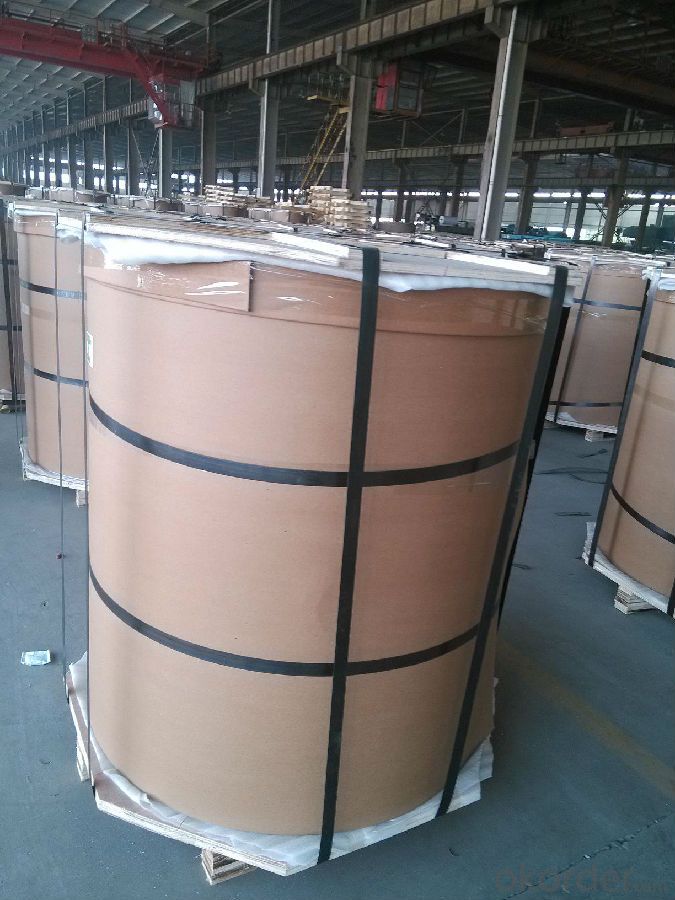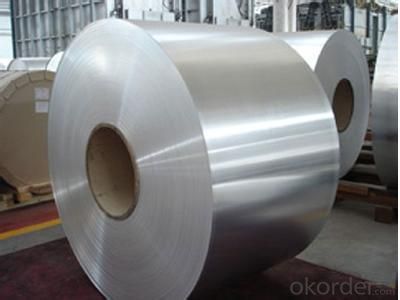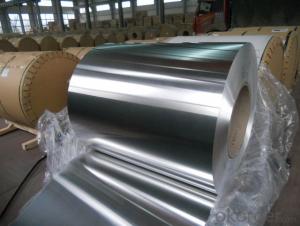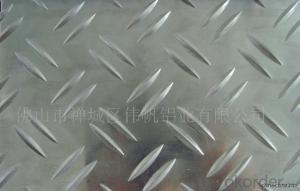Aluminum Foil Sheets AA5083 Hot Rolled Aluminium Coils for Ships Building
- Loading Port:
- Shanghai
- Payment Terms:
- TT OR LC
- Min Order Qty:
- 5 m.t.
- Supply Capability:
- 50000 m.t./month
OKorder Service Pledge
OKorder Financial Service
You Might Also Like
Specification
1.Structure of Hot Rolled Aluminium Coils for Ships Building AA5083
Hot Rolled Aluminium Coils for Ships Building AA5083 is one semi-finished aluminium material. This strip can be rolled down to aluminium coil,sheet,circle ect. The alloy AA1050 is widly used in building, industry ect. Its weight is much lower than steel. So many customers choosed aluminium material instead of steel.
2. Main features of Hot Rolled Aluminium Coils for Ships Building AA5083
a.Competitive price---We have our own mills and can produce mill finished aluminium coils, so we can control the production cost better.
b.Professional after-sale service---We have more than 15 years exportation experience and you need not worry about the exporation problems.
c.Fast delivery time---We can control the delivery time within 35 days.
3. Image



4. Product Specification of Hot Rolled Aluminium Coils for Ships Building AA5083
| Alloy | Temper | Thickness | Width | Weight |
| AA5083 | H14 | 0.2MM-3MM | 1000MM-1800MM | 2 TONS |
5.FAQ:
What is the quality standard?
---Usually our standard is GB3880-2006
What is the largest width?
---It is 2300mm
What is the MOQ?
---Usually we can accept 80 tons.
- Q: The which temperature the aluminum evaporates in vacuum?
- Aluminum boils at 2519 °C (4566 °F) at normal pressure. In a vacuum, it might boil (a little) at 808 °C, but actually this is better known as subliming.
- Q: Can aluminum sheet be used for heat shielding?
- Indeed, heat shielding can be achieved by utilizing aluminum sheet. Due to its high thermal conductivity and exceptional heat dissipation characteristics, aluminum proves to be a proficient substance for applications pertaining to heat shielding. Furthermore, its capacity to reflect radiant heat renders it appropriate for deployment in thermal barriers and insulation systems. Moreover, the lightweight nature, resistance to corrosion, and ease of fabrication associated with aluminum sheet render it an economical option for heat shielding across diverse industries including aerospace, automotive, and electronics.
- Q: What are the different surface treatments for aluminum sheets to improve corrosion resistance?
- There are several surface treatments available for aluminum sheets that can significantly enhance their corrosion resistance. These treatments include: 1. Anodizing: Anodizing is a widely used surface treatment for aluminum sheets. It involves immersing the aluminum in an electrolyte solution and applying an electric current. This creates a protective oxide layer on the surface of the aluminum, which improves its corrosion resistance. 2. Chromate Conversion Coating: Chromate conversion coating, also known as chemical film or chromating, is another common treatment for aluminum sheets. It involves immersing the aluminum in a solution containing chromate compounds. This forms a thin layer of chromate on the surface, which acts as a barrier against corrosion. 3. Powder Coating: Powder coating is a dry finishing process where a powdered polymer is sprayed onto the aluminum surface and then cured under heat. This creates a durable and corrosion-resistant coating that provides excellent protection against environmental factors. 4. E-coating: Electrophoretic coating, or e-coating, is an immersion-based process in which the aluminum sheet is submerged in an electrically charged paint bath. This attracts the paint particles to the surface, creating a uniform and corrosion-resistant coating. 5. Cladding: Cladding involves bonding a layer of a different metal, such as stainless steel or zinc, to the aluminum sheet's surface. This creates a protective barrier that shields the aluminum from corrosion. 6. Organic Coatings: Applying organic coatings, such as acrylic or polyester paints, to the aluminum surface can provide an effective corrosion-resistant barrier. These coatings form a protective film that prevents moisture and corrosive substances from reaching the aluminum. It is important to note that the choice of surface treatment depends on various factors, including the specific application, environmental conditions, and desired appearance. Some treatments may be more suitable for certain industries or environments, so it is advisable to consult with professionals to determine the most appropriate treatment for a particular application.
- Q: Fiber laser cutting machine and carbon dioxide laser cutting machine, which thin aluminum plate effect is better?
- Carbon dioxide laser cutting edge, a little black, if it is to use optical fiber, the cutting effect is more beautiful, but it also depends on your needs, our fiber laser cutting machine and carbon dioxide laser cutting machine have, can come to visit Hummer laser
- Q: Can aluminum sheets be used for electrical busbars?
- Indeed, electrical busbars can utilize aluminum sheets. Aluminum possesses exceptional electrical and thermal conductivity attributes, making it an ideal material. Moreover, it boasts advantages such as being lightweight and cost-effective in comparison to copper and similar metals. Nevertheless, employing aluminum sheets for busbars necessitates certain considerations. Due to aluminum's higher resistance in comparison to copper, larger cross-sectional areas may be necessary to compensate for this discrepancy. Furthermore, it is vital to implement proper insulation and joint connections to prevent potential galvanic corrosion issues between the aluminum busbars and other metals within the electrical system. In summary, aluminum sheets can serve as a suitable choice for electrical busbars, but careful evaluation of the specific application requirements and design considerations is essential to ensure optimal performance and safety.
- Q: Is it possible to use aluminum sheets in environments with low temperatures?
- <p>Yes, aluminum sheets can be used in cold climates. Aluminum has excellent corrosion resistance and maintains its strength in low temperatures, making it suitable for use in cold environments. It does not rust or corrode easily, which is beneficial in harsh weather conditions. However, it's important to consider thermal expansion and contraction, as aluminum expands and contracts more than some other materials. Proper installation and design considerations are necessary to account for these properties in cold climates.</p>
- Q: Nissan A1100P aluminum plate is equivalent to what brand of domestic, where there are relevant information and instructions, mechanical design manuals or other materials manuals? Thank you.
- 1, aluminum plate A1100P equivalent to national standard AL1100 aluminum plate.2 and 1100 are pure aluminium, the content of aluminium is 99%, which can not be improved by heat treatment. With high corrosion resistance, electrical conductivity and thermal conductivity, and its small density, good plasticity, through pressure processing can produce all kinds of aluminum, but the strength is low.
- Q: What is the standard thickness of aluminum sheets used for exterior building applications?
- <p>The typical thickness of aluminum sheets used for building exteriors ranges from 0.7mm to 1.2mm. This range is suitable for applications such as facades, cladding, and roofing. The specific thickness can vary depending on the structural requirements, wind loads, and the overall design of the building. Thicker sheets may be used for more robust structures or in areas with higher wind pressures, while thinner sheets can be used for lighter applications or when a more aesthetically pleasing finish is desired.</p>
- Q: Can the aluminum sheets be used for manufacturing chemical reaction vessels?
- Yes, aluminum sheets can be used for manufacturing chemical reaction vessels. Aluminum is a versatile material that offers several advantages for this purpose. It is lightweight, durable, and has excellent corrosion resistance, making it suitable for containing various chemicals and reacting with them. Moreover, aluminum is relatively easy to shape and form into the desired vessel design, allowing for flexibility in manufacturing. However, it is important to note that aluminum may not be suitable for all chemical reactions, especially those involving highly corrosive or reactive substances. In such cases, alternative materials that can withstand the specific reaction conditions may be more appropriate.
- Q: What is the typical lead time for ordering aluminum sheets?
- The typical lead time for ordering aluminum sheets can vary depending on various factors such as the supplier, the quantity of sheets ordered, and the current demand for aluminum. However, in general, lead times for ordering aluminum sheets can range from a few days to several weeks. For standard-sized aluminum sheets that are readily available in stock, the lead time is usually shorter, typically ranging from a few days to a week. This is because suppliers often have these common sizes in their inventory and can ship them out quickly. On the other hand, if you require custom-sized aluminum sheets or a large quantity that is not readily available, the lead time may be longer. In such cases, the supplier may need to source the aluminum, cut it to the desired size, and process any necessary treatments or finishes. This process can take several weeks, especially if the supplier has a high volume of orders or if the aluminum needs to be imported. It is important to communicate with the supplier to determine the specific lead time for your order. They will be able to provide you with an estimated timeframe based on their current production capacity, stock availability, and any other factors that may impact the lead time.
Send your message to us
Aluminum Foil Sheets AA5083 Hot Rolled Aluminium Coils for Ships Building
- Loading Port:
- Shanghai
- Payment Terms:
- TT OR LC
- Min Order Qty:
- 5 m.t.
- Supply Capability:
- 50000 m.t./month
OKorder Service Pledge
OKorder Financial Service
Similar products
Hot products
Hot Searches
Related keywords




























